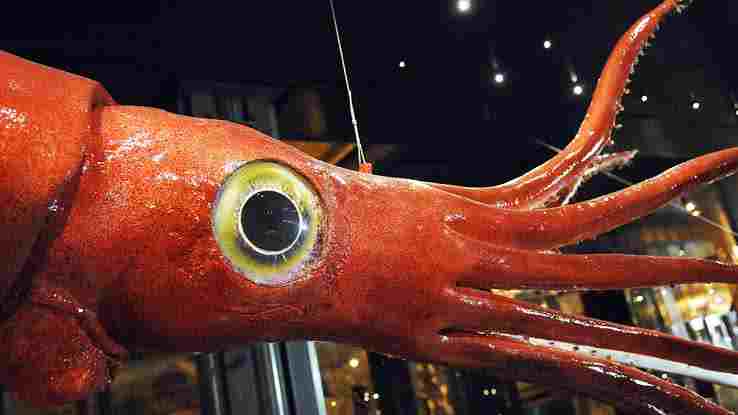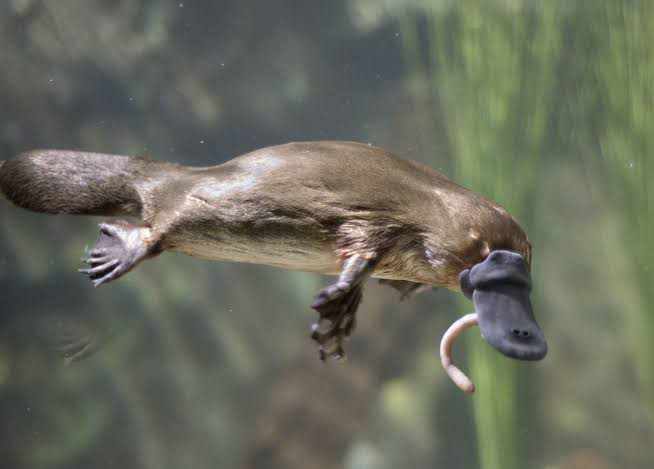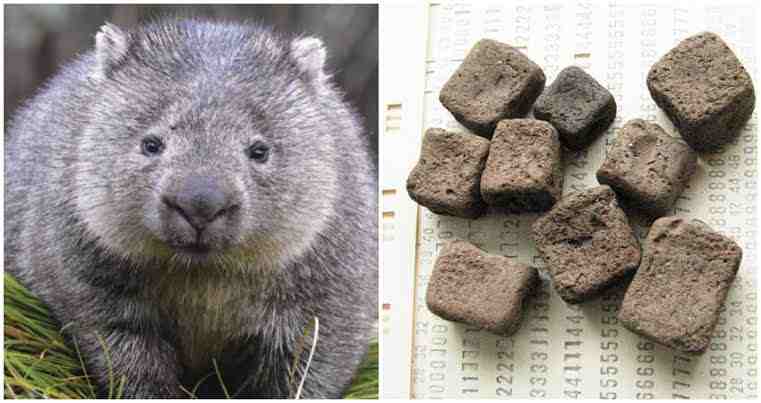Topics in Biology
Cellular respiration in biology Len Academy biology mock questions for waec Len Academy biology midterm questions for SS1, 2nd Term Characteristics of saltwater habitat Aquatic habitat explained with its types Types of habitat: Terrestrial habitat explained with examples What is habitat? Difference between plant cell and animal cell Nucleus explained with its structures Nucleus explained with its types and functions Organelles of the cell explained with their characteristics Eukaryotic cell explained with its characteristics Prokaryotic cell explained with its structure Characteristics of prokaryotic cell Concept of cell Cell theory in biology Importance and limitations of ecological pyramid Protists explained with their characteristics Contents of the scrotum: Epididymis, vas deferens, spermatic cord and cremaster muscle Tropical savanna explained with its characteristicsAcademic Questions in Biology

From the above diagram, which of the organ below isn't a requirement for the male reproductive system?
A. Bladder
B. Ureter
C. Glans Penis
D. Testis
E. Bulbourethral Gland
F. Epididymis
A walnut shaped male accessory sex organ located between the bladder and penis is the _____.
A. Ductus Ejaculatorii
B. Bulbourethral Gland
C. Prostate Gland
D. Ductus Deferens
E. Seminal Vesicles
F. Epididymis
In a food chain, the primary consumers are classified under trophic level _____.
A. Zero
B. One
C. Two
D. Three
E. Four
F. Five
Cold blooded animals are referred to as _____.
A. Homeotherms
B. Endotherms
C. Poilokitherms
D. Ectotherms
E. Thermotherms
F. None of the above
All reptiles are vertebrates.
A. True
B. False
_____ cells are responsible for the formation of osteoblasts.
_____ is a bone that constitute the axial skeleton.
Which of the following is false concerning cartilages and bones?
Biology is the study of life. If an organism is to be considered as living, it must possess certain basic life characteristics; for instance, a stone cannot move and this makes it non-living.
The point in the above instance is; every living organism must be able to move. As a result, movement is regarded as one of the basic characteristics of life.
Please read on an introduction to biology and the concept of viruses here.
Below are the basic characteristics of living organisms:
1. Movement: All living organisms move. Movement should not be confused with locomotion.
Locomotion requires a change of position while movement does not necessarily require a change of position. For instance, plants undergo bending movements while remaining on the same point (or position). Animals on the other hand can move from one point to another (locomotion).
When a plant is put in a dark room, it will attempt to bend (move) towards light. This is known as positive phototaxis.
2. Respiration: Respiration is quite different from breathing. For respiration to occur, the process of breathing must first take place.
Breathing implies the exchange of gases. For instance, organisms breathe in oxygen (inhalation) and breathe out carbon(IV)oxide (exhalation). Conversely, respiration focuses on the use of the inhaled oxygen.
Inhaled oxygen is used for oxidizing or breaking down digested food (usually glucose) to produce energy (ATP); and this is what aerobic respiration entails.
Glucose is a simple sugar derived from the breakdown of carbohydrates (or complex sugars).
Please read on carbohydrates and sugars here.
Carbon(IV)oxide and water are waste products from aerobic respiration, thus organisms breathe them out.
Note: Respiration can also be anaerobic if food is broken down in the absence of oxygen.
Aerobic respiration occurs in an organelle of the cell called mitochondria and ATP is generated through the process. For this reason, the mitochondria is often regarded as the power house of the cell.
ATP is an acronym for Adenosine Tri Phosphate.
3. Nutrition: All living organisms must feed to stay alive. Without food, organisms will neither grow, reproduce nor excrete.
Plants are organisms that manufacture their own food and are thus referred to as autotrophs. Animals on the other hand depend on ready made food, thus are referred to as heterotrophs.
4. Irritability: All organisms must be able to respond to stimuli if they are to survive in their environment. As an instance, a desert plant will have its root penetrating deep into the soil in order to get water.
Based on survival instincts, all animals will attempt to fight or run for survival whenever they sense danger.
Please read on the uniqueness of man here.
Note: A stimulus is anything that can elicit a physiological response in an organism. Stimulus can be either external or internal.
The sense organs (eyes, nose, ear, tongue and skin) acts as sensory receptors to external stimuli; that is, they receive stimuli from our environment. Examples of stimuli include touch, pressure, heat, cold, light, pain, water, sound, chemicals and so on.
Another name for irritability is sensitivity.
5. Growth: All living organisms must grow in size and mass. The food we eat (preferably protein) provides the basis for our growth through cell division. In addition to enhancing growth, protein also repair worn out tissues.
6. Excretion: All living organisms must remove metabolic waste product form their body. Metabolic waste products include water, urea, carbon(IV)oxide, sweat and so on.
Feces is not a metabolic waste product. This is so because it isn't produced via the body cells. Rather, they are undigested materials eaten via the mouth but didn’t even enter the body cells in the first instance. Inshort, they are not absorbed by the intestines into the body cells.
In larger animals, The removal of solid undigested materials from the anus is termed as egestion.
7. Reproduction: All living organisms have the ability to reproduce; that is, give birth to their young or offspring. Reproduction ensures the continuity of life for the various species of organism.
Living organisms reproduce in two ways:
When both sex cells meet (usually inside the female, but could also take place externally); fertilization occurs and a zygote is formed.
The reproduction involving sperm and egg is termed sexual reproduction.
Please read on the male reproductive system here.
The parent organism reproduces by dividing itself (cell division or binary fission), budding, spore formation or some other means.
Reproduction in this manner is termed asexual reproduction.
Please read on asexual reproduction in plants (plant propagation).
8. Death: All living organism must die. After death occurs, an organism will be considered as non-living because it cannot carry out other life characteristics.
Normally, living organisms are expected to grow and mature before they die.
Death is said to occur when an organism cannot carry out the other basic characteristics of life.
9. Adaptation: All living organisms must adapt to their environment if they are to survive. For instance, a fish is able to live in water because it has gills and fins.
Also, a camel is able to survive in the desert because it has large feet to aid walking on sand without sinking. It also has long eyelashes to help protect it from the blowing sand and wind.
Please read on desert biome, types and characteristics of desert here.
The point is:
All organisms have various features on them that enables them adapt within their habitat.
Note: Plants are also able to live in different habitats because they have the required adaptive features towards that habitat. For instance:
10. Competition: Due to the limitation of resources, all living organisms must be able to compete for the necessary available resources if they are to stay alive.
The limited resources include food, water, light, mates, space and so on.
You may have observed that male lizards (with red necks) map out their territories in order to enjoy all the resources within it. To this end they will usually undergo fierce competition from their male counterparts before such territories can become theirs.
The above form of behavior in male lizards is termed territorial behavior or territoriality.
Kindly share this article via the links below:

Please click here to contact Alfred if you require any of the following services:
If you need a standard website at an affordable price.
Online training on the academic subjects: biology, chemistry and basic science.
If you require an advanced smart school management system (web application) for your school.
Click here to read on Len Academy Smart School Software.
Please click here to follow Len Academy on Google News.
Amazing facts in Biology
Russia is home to the largest area of forest in our world with a land mass of 815 million hectares

Giant squid lives deep in the ocean and they have the largest eyes in the world
The movements of the fingers are controlled by muscles of the palms and forehands

Platypus (sometimes referred to as the duck-billed platypus) is an egg-laying, semiaquatic mammal found in eastern Australia. It has no stomach and as such, its food goes from the mouth through the esophagus and directly to their intestines.

Pufferfish contain a toxin called tetrodotoxin. This makes them foul tasting and poisonous to predators. Tetrodotoxin is about 1,200 times more poisonous than cyanide, and there is enough toxin in one pufferfish to kill 30 adult humans. Unfortunately, there isn't any known antidote to this poison.
Interestingly, a delicacy in Japan (called fugu) is made from pufferfish. This meal is very expensive, and must be prepared by trained and licensed chefs. An improper preparation of fugu may lead to the customer's death. Sadly, such deaths are recorded annually

Wombats are the only animal with a cube-shaped poo. They can stack up these cube-shaped poo, marking their territory with it

Robert Wadlow (1918–1940) remains the tallest man ever recorded in the Guinness World Records. He was an American who stood at 8 feet, 11 inches.
An abnormally enlarged pituitary gland had resulted into Robert Wadlow's giant size.
Cockroach is the fastest land animal on six legs

Like humans, all apes laugh when tickled

An ostrich's eye is bigger than its brain
Notable points in Biology

An artery is composed of three layers:
The outermost layer is termed tunica adventitia (or tunica external). It consist mainly of collagen fibres and connective tissues that anchors the arteries to other nearby tissues.
The middle layer is named tunica media. It is made up of smooth muscles and elastic fibres that supports the artery in conveying blood at high pressures.
The inner layer is called tunica intima (or tunica internal). It is lined by a smooth tissue called endothelium, and is made up of a fine network of connective tissues.
All living organisms possess various features in order to survive in their environment. This is the concept of adaptation. As an instance, a fish is able to live in water because it has gills and fins.
Also, a camel is able to survive in the desert because it has large feet to aid walking on sand without sinking. It also has long eyelashes to help protect it from the blowing sand and wind.
Plants are also able to live in different habitats because they have the required adaptive features towards that habitat. For instance:
Plants that live in/on water are termed hydrophytes.
Plants that live on land with moderate amount of water are termed mesophytes.
Plants that live on deserts or arid lands are termed xerophytes.
The point is:
All organisms have various features on them that enables them adapt in their habitat
For a thing to be considered living, it must possess all the basic characteristics of life. These include:
Movement
Respiration
Nutrition
Irritability or Sensitivity
Growth
Excretion
Reproduction
Death
Adaptation
Competition
Please read the explanations on all the basic characteristics of life here
During strenuous exercises like sprinting or running, your body may actually work in the shortage of oxygen. During this time, your body owes oxygen (called oxygen debt) and it must be replenished or repayed after the exercise is stopped. This is why you breathe excess of oxygen after you stopped the exercise.
This is the concept of anaerobic respiration

A food chain is a diagram that shows the relationship between plants and animals within a habitat on the basis of how they rely on each other for food.
Note: Habitat is a place where an organism live. It is of three types: